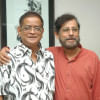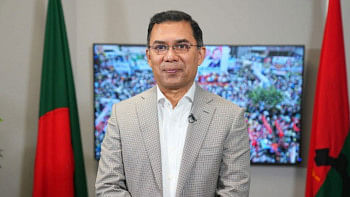The man who turned everyday life into cinematic poetry

They say that thirteen is an unlucky number. Superstition marks it as a shadow on the calendar, a date to avoid. Yet on November 13, Bangladesh received one of its greatest gifts, Humayun Ahmed, a storyteller who transformed our screens and preserved our souls through cinema. Novelist, screenwriter, and director, Humayun Ahmed reshaped the way Bangladeshis see themselves on screen. His films, much like his writings, portrayed simplicity, emotional honesty, humour, and a deep understanding of ordinary life. His films were never about grand spectacles or artificial drama. They were about us- our families, our wars, our silences, our laughter echoing through tin-roofed houses. His movies preserve our history, celebrate our rural and urban culture, and show how life flows naturally, without exaggeration or artificial drama.
Humayun Ahmed's journey through the 1971 Liberation War was not that of a soldier holding guns, but of a young man holding memories. His father, a police officer, was killed by the Pakistan Army. At the age of 23, he witnessed the brutality of conflict. These experiences turned into "Aguner Poroshmoni" (1994), a film that preserves our history through sharing food, hiding a wounded freedom fighter, singing quietly during curfew. The story of a Dhaka family sheltering Badi, a wounded freedom fighter, becomes a powerful portrayal of the war. The characters here are portraits of real Bangladeshis. Through waiting, whispered plans, and the weight of a hidden presence upstairs, Humayun Ahmed captured the moments of 1971: the fear, the love, the impossible choices.

After exploring the war, Humayun delved into the world of folklore with "Chandrokotha" (2003), where rural life blends naturally with imagination. He portrays village life with the warmth of courtyard laughter, night-time gatherings, local music. The story shows the real picture of Bangladeshi society.
However, his exploration of Liberation War experiences continues in "Shyamol Chhaya" (2004), where the struggle unfolds on a boat filled with people fleeing in 1971. Unlike typical war films filled with violence, he focuses on the psychological journey to escape, to survive, to reach safely across the river that separates death from life. The boat becomes a floating microcosm of Bangladesh: rich and poor, Hindu and Muslim, brave and frightened, selfish and selfless- all trying to survive together. Even in this confined space, Humayun highlights religious harmony amid chaos, showing how communal identity dissolves into shared humanity when survival is at stake. Through silence, fear, suspicion, and fragile hope, "Shyamol Chhaya" captures the psychological truth of 1971 and transforms a simple boat journey into an instance of unity and survival.

After exploring collective struggles, Humayun turns toward an emotional journey in "Amar Ache Jol" (2008). The characters are regular people dealing with regrets and unsaid words. Humayun's literary technique of showing rather than telling reaches its peak here, as characters communicate through pauses, glances, and things left unsaid. Rain, water, and flowing time become visual metaphors for their emotional states. Through these ordinary characters, Humayun showed how real people experience romance—messily, incompletely, beautifully.

Then came his final and most daring work, "Ghetu Putro Komola" (2012), which stands apart from everything before it. Based on the tradition of Ghetu songs, the story follows Komola, a boy performer who faces exploitation. Young Komola, dressed as a girl to perform, becomes trapped in a system where art and abuse intertwine. The Zamindar's mansion, which should be a palace of culture, instead becomes a prison of power imbalance. The film preserves a vanished cultural practice while questioning its human cost. Even in darkness, Humayun finds heartbreaking beauty. He has created a testament to the victims of historical exploitation.

Humayun's cinema flows like our rivers. It flows naturally, unhurried, sometimes flooding with emotion, sometimes running quiet and deep. His characters could be our neighbours, our relatives, ourselves. He portrayed simple things with such care that they became beautiful. Most importantly, he preserved our history, not just dates and battles, but how people actually lived, spoke, loved, and struggled. Future generations will watch these films and understand who we were.
Born on an unlucky number, Humayun Ahmed proved that luck is what you make it. Through his lens, every ordinary Bengali life became worthy of cinema, every simple moment contained magic. On his birthday, we celebrate not just a filmmaker, but the mirror in which Bangladesh saw its most honest reflection.

 For all latest news, follow The Daily Star's Google News channel.
For all latest news, follow The Daily Star's Google News channel. 









Comments